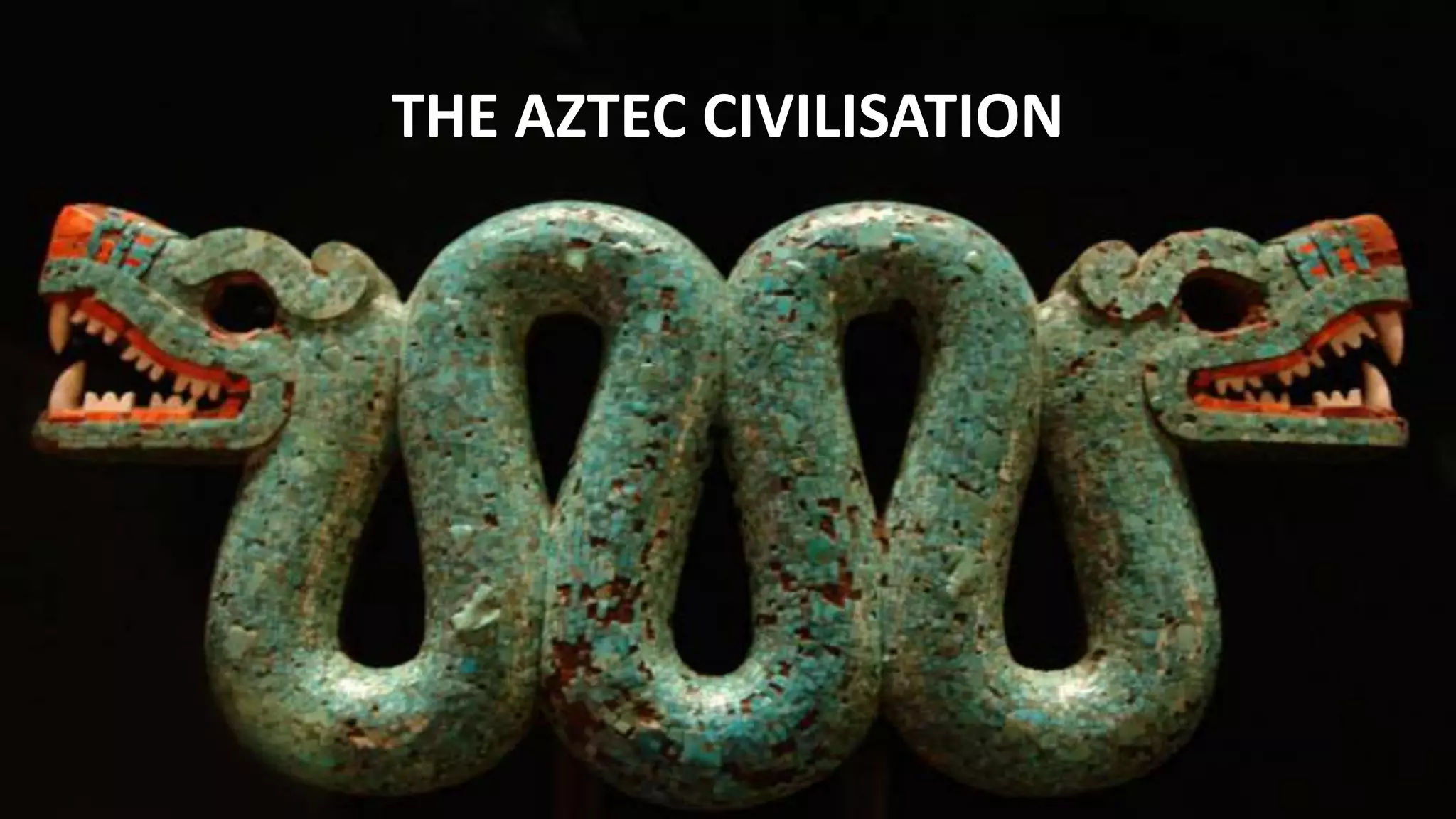The Aztec Empire, known for its rich culture and complex society, was formed through an alliance of three city-states and lasted from 1428 until its fall to Spanish conquistadors in 1521. Characterized by a system of tribute and indirect governance, the empire was marked by significant achievements in architecture, art, and a unique religious framework centered around deities like Huitzilopochtli. The diverse society included a structured class system, a focus on education, and advanced trade networks, with a lasting legacy evident in modern Mexican culture and language.























